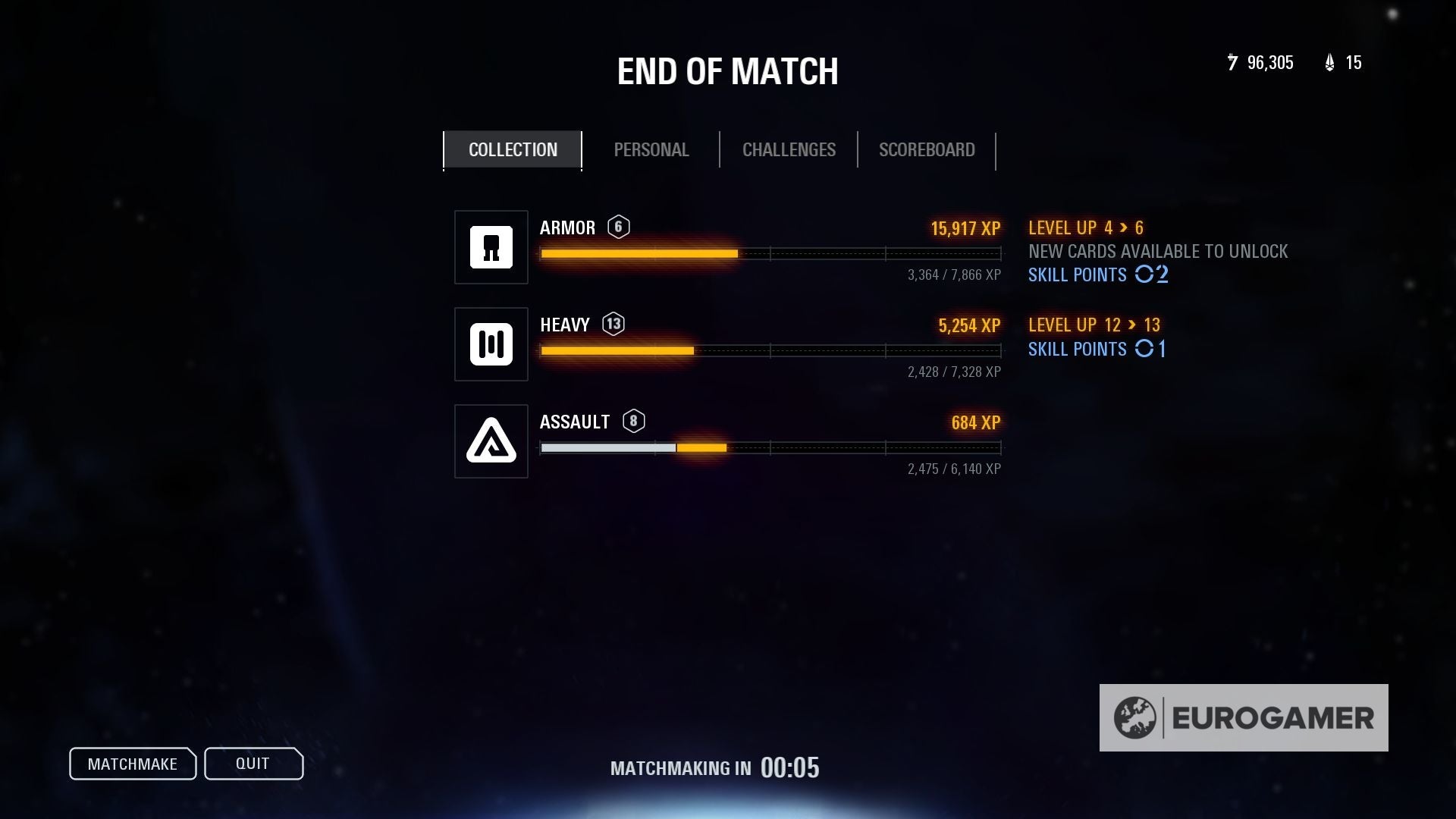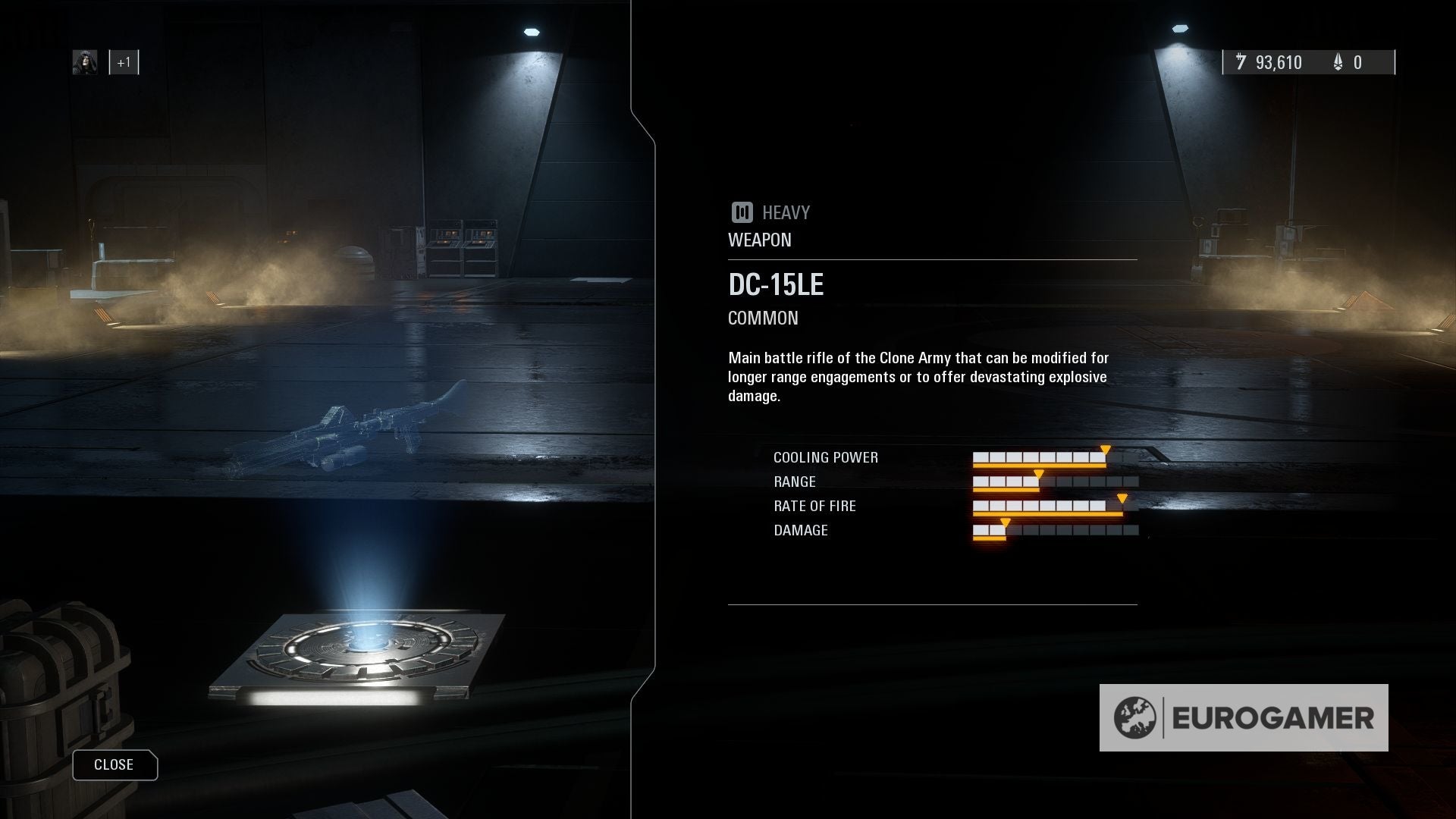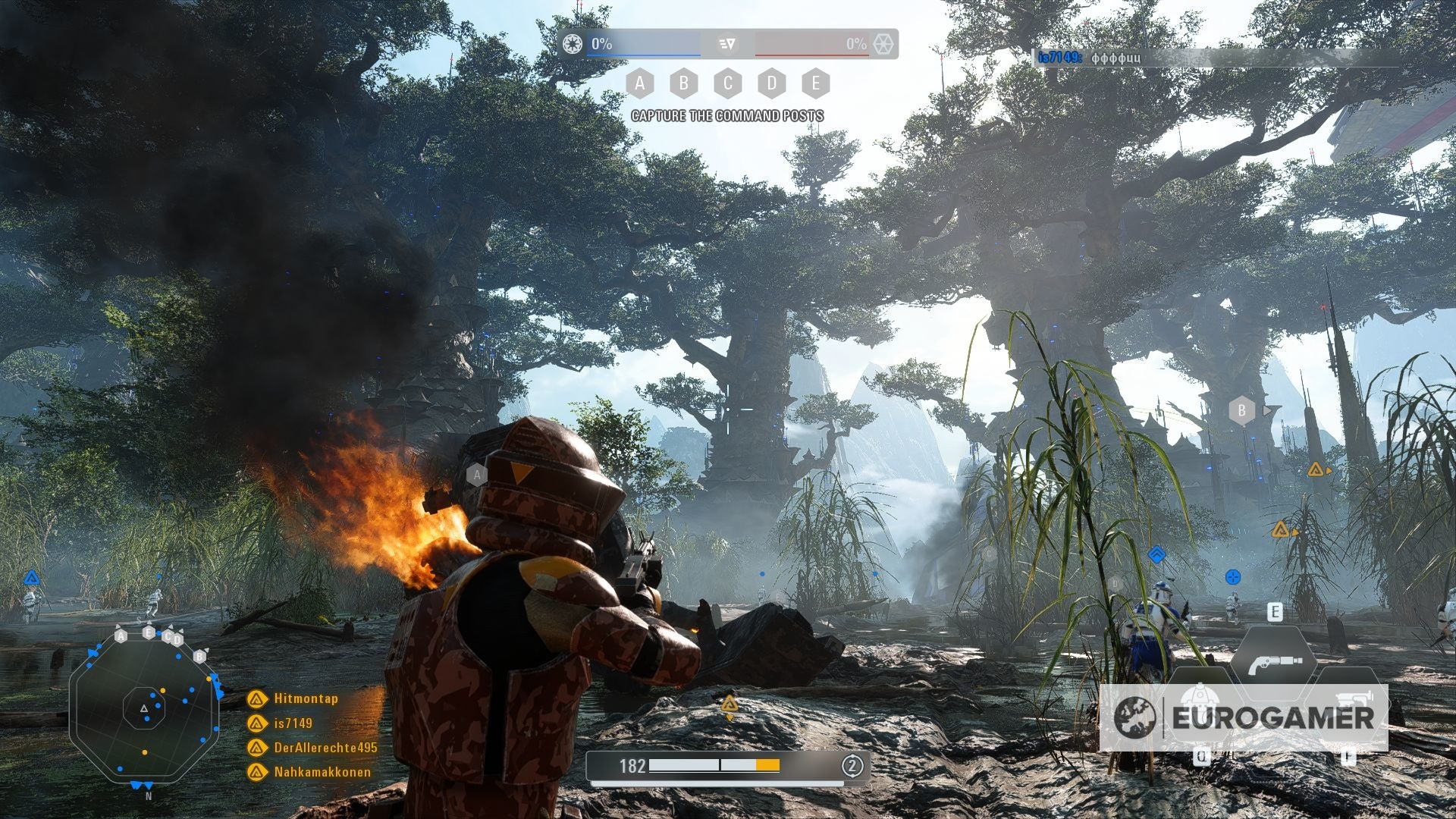Battlefront 2 was handed out for free for about a week on the Epic Games store in January, you see, and it’s also bundled in with a Game Pass Ultimate subscription, thanks to the recent inclusion of EA Play with that, too. The result has been a late, but seemingly quite sustained second wind. Servers are full, and quite nicely balanced, with the end-of-round scoresheets showing everything from max-level players with 60-plus kills to low-level newbies holding their own. On PC at least, people are quite chatty, via the in-game feed, in that very Battlefield kind of way, and unlike Battlefield it’s quite chill, as far as multiplayer shooters go - because Battlefront 2 is quite a chilled game. “Quite good” and “quite chilled” - I feel like I’m underselling it. Battlefront 2 is ace. It’s a proper just-how-I-remembered-it job, building the big, headliner multiplayer matches around the beats of silliness and exaggeration: choke points, rockets, obscene amounts of lasers. Total, joyous, balanced carnage. There’s a trick borrowed from an unexpected source here, in the way Battlefront 2 is set up to win you over not with nostalgia, which can be cheap, but by evoking actual, specific memories or specific emotions you last had in childhood. It’s all about recreating the schoolyard role-playing games you might have played, the silly felt-tip drawings of massive, droid-army battles, the fantasies of heroism, inspired most vividly by the prequels, purposefully childish themselves. This is Hitchcock. For him it was using tricks of light and shadow to make some fear come to life, like the innocuous toy on the bedroom dresser that seemed so spooky in the night. Or it was using the conceits of plot to mimic the thrills of hide and seek. Using the grand, imaginative fear of the unknown. It’s not the same, obviously - but also it kind of is. It’s the same trick, used another way, and it works. Hitchcock! In Star Wars Battlefront 2! Maybe that’s a bit much, but even if we talk about it using all the pre-approved language of video games - how “deep” it is, how “visually stunning”, how “immersive”, how nice the “gunfeel” is, how “well-supported” it’s been by the developers at DICE, Criterion and Motive - it’s still a cracker. All of this is great. Immaculate, actually, across the board. There are way more maps than I expected, having last played the slightly limited first (new) Battlefront at launch - apparently it now covers at least one location from every Star Wars film that’s come out, an ageing dev-blog tells me, trickled through with dutiful regularity in the many years after launch. The best modes mirror the best of Battlefield, too: the giant, multi-stage objective chasers, that have you pushing through entrenched defences or picking away at the armour of AT-ATs on Crait and Endor; driving forward from the beaches of Kashyyyk to transport ships in the jungle to a fight on a huge battleship in the skies above; or along a simply vast linear road on Geonosis to a wide open battlefield at the end - a sweeping reimagination of that map that would, I think, have caused my 12-year-old brain to simply melt apart had it seen this at the time. And again, those choke points, evocative of classic (old) Star Wars Battlefront maps like Coruscant and classic Battlefield ones too, like the bridges and staircases of Battlefield 3’s Seine Crossing on Rush. It’s all exaggeration, all tension, all a means of - sorry, another Hitchcock reference incoming - taking something mundane and making it into drama. Mind, there is also, just slightly, a whiff of death to it all. Infamously, Battlefront 2 (back to the new one again now) launched to a chorus of loot box drama, with some messy - or predatory, depending on your reading - microtransactions leading to government investigations and apologies and all the rest. All the in-game monetisation is actually completely gone of course, now. Long gone. But weirdly so too, for most of its new players - and therefore probably most of its current players full stop - is all of the non-monetised progression as well. The version EA chose to give away so kindly is the Celebration Edition, the one where all progression in the game is automatically unlocked. What’s left, after a slightly forlorn farewell from the developers in the spring of 2020, is a seemingly automated rotation of in-game events - bonus XP, cheaper in-match progression and the like - and just a slight sense of abandonment. A tinge of Last Days of Rome, everybody running about with their Legendary Han Solo skins or their event-cheapened elite Super Battle Droid characters just blasting away with abandon at everything in sight. It’s the last embers of society, people still playing to the objective long after there was anyone left in charge. The last day of school and the teachers have already gone. A sense of get-it-in-now, have your fun while you can, and a sense of crushing irony too: that now, with a surge of popularity, nothing about the game can be monetised to help keep the servers live. The medium’s hardly unique, in this ability to self-defeat with such remarkable efficiency, but there does seem to be an uncanny knack for it - just as there’s the knack for all the magic of Hitchcock, and the power of drama, and all the purest of childhood joy. I feel obliged to say that Battlefront 2 is a reminder of the former, of games getting in their own way. But actually, no. I’d rather not. Star Wars Battlefront 2 is a reminder of the magic.



